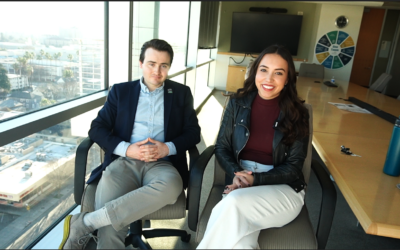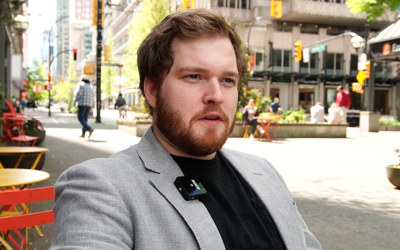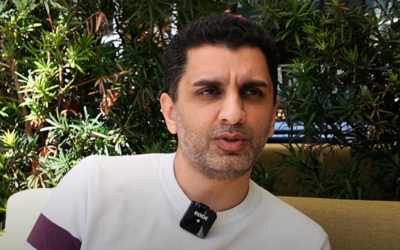Ask the Experts: Making Cities People-Centric with Dale Bracewell
Our latest “Ask The Experts” delves into the transformative power of data in creating people-centric cities as urban spaces grow, underlining the importance of optimizing our infrastructure. Our Expert Dale Bracewell has over two decades of experience as a transportation engineer and gives us his take on why the focus needs to be on a variety of travel modes, not simply expanding roads for more cars.
 Meet the Expert: Dale Bracewell is both a Professional Engineer and a Certified Foresight Practitioner with over 20 years experience. He’s worked for municipal and provincial governments as well as the private sector. During his time at the City of Vancouver, he played a pivotal role as the lead of transport planning for the 2010 Olympic Winter Games. He established the city’s first Active Transportation team, and directed their Transportation Planning projects. Now he’s at the helm of Mobility Foresight as Principal, Dale offers advisory services that blend strategic planning with a forward-thinking approach, facilitating transformative and resilient mobility solutions.
Meet the Expert: Dale Bracewell is both a Professional Engineer and a Certified Foresight Practitioner with over 20 years experience. He’s worked for municipal and provincial governments as well as the private sector. During his time at the City of Vancouver, he played a pivotal role as the lead of transport planning for the 2010 Olympic Winter Games. He established the city’s first Active Transportation team, and directed their Transportation Planning projects. Now he’s at the helm of Mobility Foresight as Principal, Dale offers advisory services that blend strategic planning with a forward-thinking approach, facilitating transformative and resilient mobility solutions.
A shift in transportation
Over the past two decades, the urban transportation landscape has been profoundly evolving. As Dale points out, “we’re not building more roads, and they’re not getting any wider.”
Expanding road networks often leads to induced demand. More roads attract more cars, perpetuating congestion issues.
The core issue, he points out, lies in reallocating current road spaces as cities stop expanding their road networks. Bracewell says various factors are driving this transformation across different cities.
“Some are doing it from an environmental perspective, some are doing it for more public space, but ultimately it’s about moving more people. We need to rethink how we make use of our streets to move people, to move goods, and to have them more people-centered,” says Bracewell.
He says the overarching aim is to transition towards more people-centered urban landscapes where the mobility of individuals is prioritized. Bracewell suggests that by doing this, we optimize existing infrastructure and move closer to creating inclusive, accessible, vibrant urban spaces.
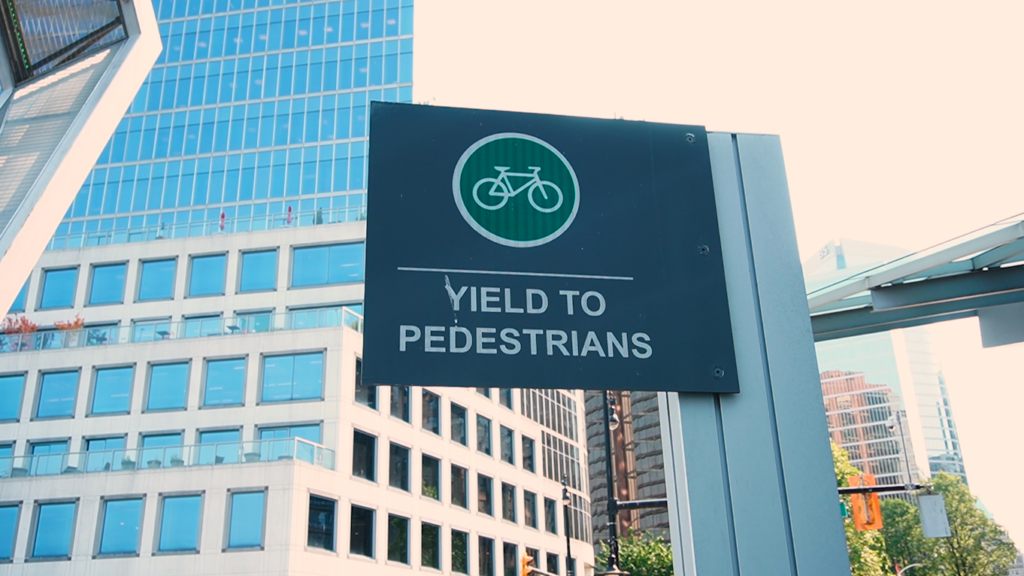
Still from UrbanLogiq’s Ask the Experts
It starts with a vision, backed by data
Effective transportation planning begins with a clear vision, followed by examining evidence to support that vision, Bracewell explains. To do that, you need data to help identify what is working and what isn’t.
“You want good data to be able to go back to your decision-makers and say, these investments, these strategies, these programs that we’re doing are actually working,” says Bracewell.
A data-driven approach validates initiative effectiveness, emphasizing the transition to sustainable and user-friendly transportation modes.
Bracewell emphasizes that having more data helps make better-informed decisions when reallocating road space. By sticking to a data-centric approach, planners and decision-makers are better positioned to measure the impact of their strategies. They’re able to ensure they’re on the right track toward creating more accessible, sustainable, and user-friendly transportation systems.
“As your decision makers make those bold, transformative moves, you really want that data-centered evidence to say the plan is working, we’re actually getting results,” says Bracewell.
Consider a city that’s planning to build more bike lanes. By adopting a data-centric approach, they can utilize data to strategically place bike lanes for maximum efficiency and safety as well as install eco-counters to track the program’s impact over time.
Using data to open up the dialogue
For Bracewell it is clear that having robust data is a cornerstone of effective transportation planning, a point drawn from his over twenty years of experience as a former public servant. However, he believes when data is shared transparently with the public it serves a wider purpose.
In doing so, he says “[the public] can actually share in the decision making and understand the types of shifts that we’re trying to do in a limited amount of road space,” says Bracewell.
He adds, this transparency is important to foster a deeper understanding amongst the public. It invites them to be engaged in how decisions are made and why. He believes by demystifying the goals, objectives and actions behind transportation planning, you create a dialogue with the community. It then fosters a shared vision for more people-centric and sustainable urban environments.
Using data to be more equitable
Making sure marginalized and underserved communities are prioritized and considered is a critical and important part of holistic urban planning. As Dale articulates, the key to effectively serving these communities circles back to the use of data. Using data to map out these communities can help identify their unique needs and areas that need attention.
“Going forward, data should inform further engagement with those communities. It should help us get better at including lived experiences, which should inform the reprioritization of where we’re making more investments,” says Bracewell.
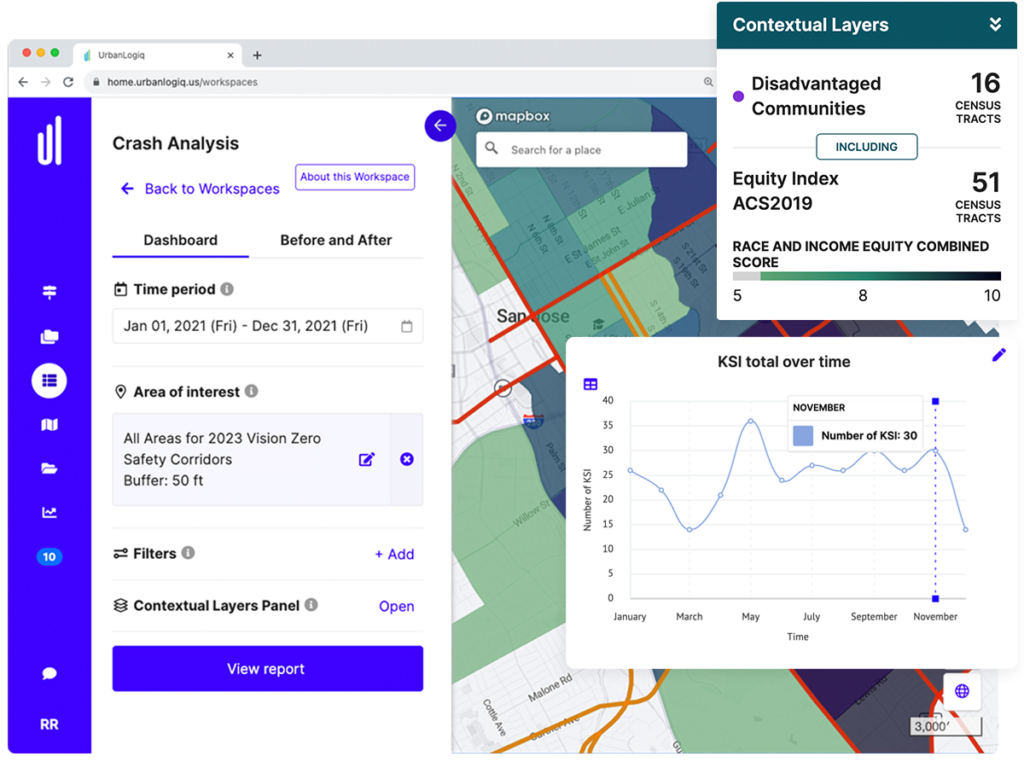
Image Source: UrbanLogiq
The role of transportation planning in sustainability
The impact of transportation on a city’s carbon footprint cannot be overstated. Bracewell states that it accounts for a substantial 30% to 40% of total greenhouse gas emissions. Hence, it is a necessary consideration in any city’s climate action agenda.
Regarding a climate action agenda, Bracewell suggests prioritizing active transportation, public transit, and transitioning to electric vehicles from a transportation perspective.
“You need more people out of cars, taking sustainable modes. And then for the cars that you still have from a climate perspective, you want to see that shift to electric vehicles,” says Bracewell.
But Bracewell says an equally crucial facet of this climate strategy is fostering walkable communities that remove the need for car trips altogether. He notes, “You want those walkable complete communities to give people the option to not even have to take a car trip or a long distance transit trip.” says Bracewell.
Bracewell highlights how the synergy of active transportation, vehicle electrification, and proper land use creates a strong framework for climate mitigation.
What makes a “Smart City” smart?
When asked about the impact of ‘Smart Cities’ on transportation planning, Bracewell begins by defining what a ‘Smart City’ is.
“To me, first and foremost, a “Smart City” is the city that’s actually trying to move towards supporting more walking, biking, and transit and being more people-centered,” says Bracewell.
But Bracewell clarifies that it doesn’t stop there. The ‘smartest’ cities, he says, are the ones that use data, technology, AI and analytics to support a smart city mindset, becoming more sustainable in moving people and goods.
Through his lens, the smart city narrative transcends tech-advancements, resonating deeply with the ideals of sustainability and people-centered urban development.
Team work, does make the dream work
But how do these strategies and projects actually get done? Drawing from his hands-on experience, Bracewell underscores the pivotal role of collaboration in steering sustainable transportation planning initiatives. Recalling his tenure at the City of Vancouver, he highlights a collaborative effort that drove progress on a climate emergency action plan.
Bracewell notes, “It was a true collaboration. Our transportation team and sustainability team worked together to make bold moves in a short time frame. We addressed the climate emergency while accelerating sustainable mobility.”
The collaboration between the transportation and sustainability teams resulted in bold strategies and rapid implementation. It serves as an example of effective teamwork. Dale’s narrative highlights a practical approach to achieving sustainable urban mobility. It emphasizes that when different departments share a vision, progress towards sustainability can be both substantial and quick.
2010 Olympic winter games: A transportation planning success story
Transforming mobility for the 2010 Vancouver Olympics was a standout project during Bracewell’s two decades with the city.
“That project was really significant because it gave the city and the region this window to the future. One where we move a lot more people by walking, biking, and in particular transit. We were asking people to get out of their cars and doing it successfully,” says Bracewell.
With a reduction of car traffic by 30% downtown during the games Bracewell recalls the city vibrated with a new kind of energy. He recalls people embraced and enjoyed these alternative modes of transportation.
“We not only had more transit, we actually converted parts of our roadway network to be pedestrian only streets,” says Bracewell.
According to Bracewell a blueprint for the future. For the next two years, they engaged the public and businesses about what ultimately became the long range plan called transportation 2040.
“It was the window, a legacy of people’s mindset knowing, that is the future. We need to provide more transit, have more walk and bike friendly spaces in our city,” says Bracewell.
Bracewell says the 2010 Winter Games showcased a successful model of reducing car dependency. Enhancing transit infrastructure, and fostering pedestrian-friendly urban spaces contributed to an exhilarating downtown experience for everyone involved.
How UrbanLogiq helps
UrbanLogiq’s mission is to break down data silos and help government agencies make the most out of their existing data. Our easy-to-use data platform creates one common operating picture of each community. This empowers public officials to make data-driven decisions faster and cheaper than traditional methods. UrbanLogiq brings together the best of data science, data engineering, and big data to help build safe and equitable communities.
Our story: https://youtu.be/hmp-eRd8OUg
About Ask the Experts
Urbanlogiq’s ‘Ask the Experts’ series launched in the summer of 2022. It taps into the knowledge of industry experts to explore a variety of subjects. These include engineering, data science, public safety, transportation planning, and more, offering insights on a variety of timely topics. ‘Ask the Experts’ sets out to provide valuable information and resources through in-person or virtual interviews and blogs.
If you would like to be a guest on the series, contact UrbanLogiq’s Communications Manager, Luisa Alvarez.
